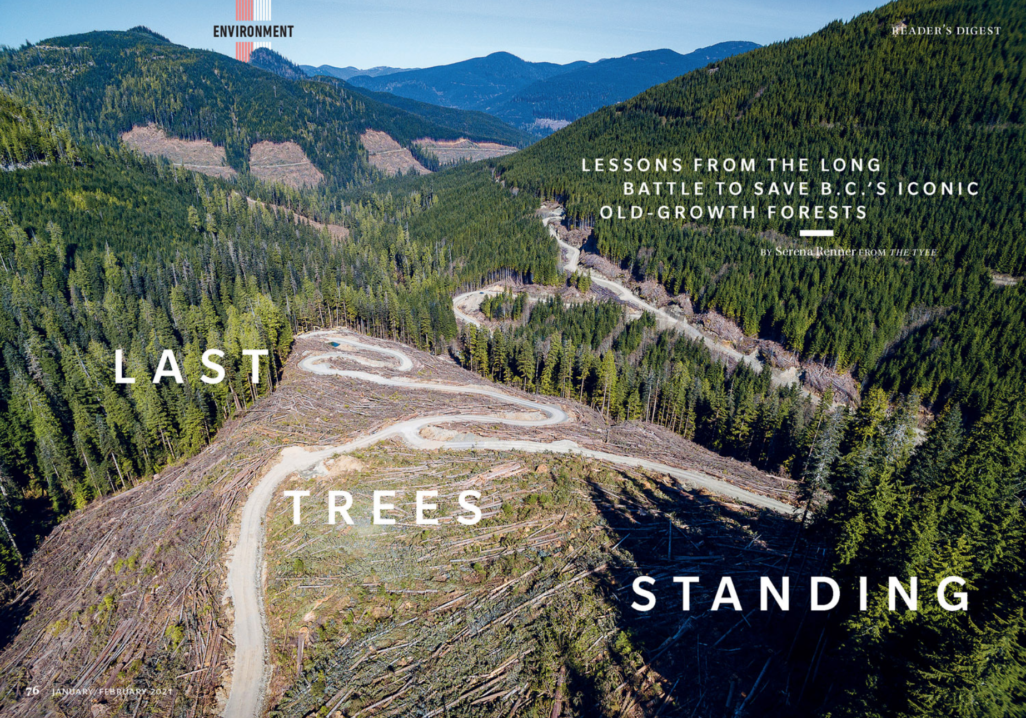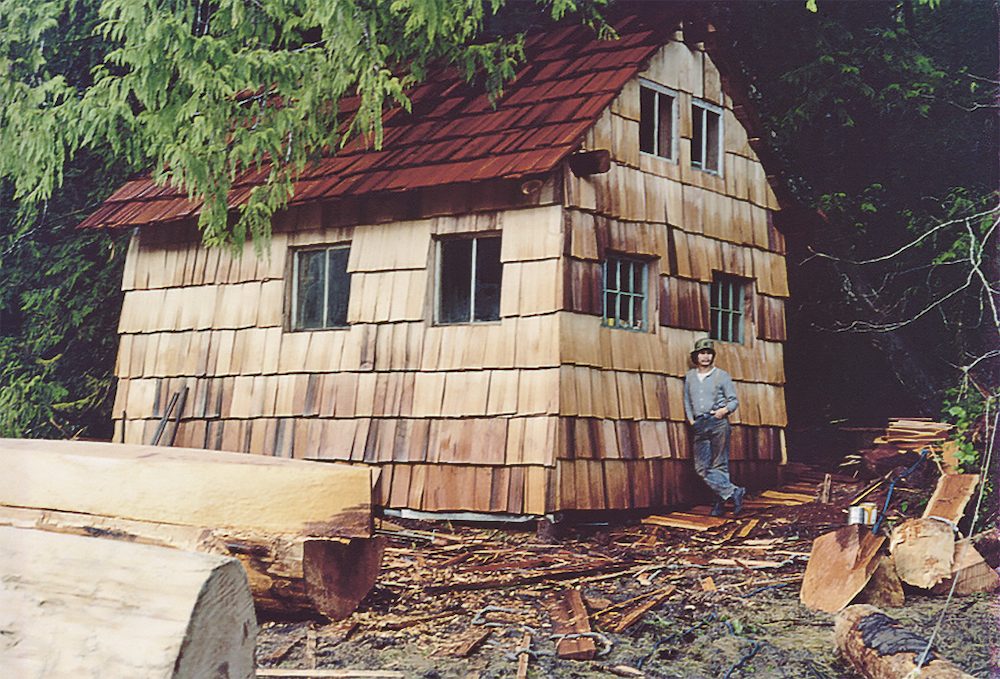
More than 30 years ago, diverse groups joined to protect B.C.’s old-growth forests. What lessons do they have for today’s environmentalists?
Tla-o-qui-aht Elder Joe Martin slows his motorboat around an eastern fin of Meares Island into Cis-a-qis Bay. It’s taken 30 minutes to get here from Tofino, a popular surf town and tourist hub on the west coast of Vancouver Island in Clayoquot Sound, B.C. “Can you see it? Can you see the cabin?” Martin’s friend Leigh Hilbert asks, pointing out a silver speck in the distance.
Also on the boat are Joe’s daughter Gisele Maria Martin, an educator and Tribal Park guardian, responsible for the environmental, archaeology and stewardship monitoring of Meares Island, and us non-Indigenous guests: myself, Hilbert and Hilbert’s partner Oona. We coast on the glassy inlet, anticipation swelling with the rising tide. Then, I can see the hand-built wooden dwelling beneath a curtain of cedar boughs. Nailed to the siding is a small green stop sign with the words “Log for the Future—Stop Clearcuts.”
“Welcome home,” Hilbert says to himself.
The 1993 Clayoquot Sound blockade, known as the War in the Woods, gained international attention and set off a chain reaction of efforts to protect B.C.’s old-growth rainforests. But a decade before, a quieter resistance took root here on Wah-Nah-Jus Hilth-hoo-is (Meares Island). It’s not as well known as the Kennedy Lake Peace Camp, where nearly 900 people were arrested. And neither it nor the War in the Woods ended the clearcutting of old-growth forest. But the campaign to protect Meares Island is an inspiring early example of Indigenous and non-Indigenous people working together to defend the land.
It’s been 20 years since Hilbert has seen the 320-square-foot cabin that served as the de facto headquarters of Canada’s first logging blockade. That cabin is also where Martin and Hilbert cemented their bond. Over nearly five decades of friendship, nothing compares to the winter they helped save Meares Island from chainsaws.

Joe Martin at the cabin, shortly after it was built. Photograph courtesy of Leigh Hilbert.
Martin leads us inside the cabin, as he and Hilbert walk across the creaky floors and reminisce. A cupboard door broken off at the hinge is carved with a moon symbol. Gisele explains that sun and moon crests often represent iisaak, an important Indigenous law that is also a verb, meaning “to observe, appreciate and act accordingly.”
Martin, now 67 years old, and Hilbert, now 70, stop at a display of sepia photos, warped by time and water. Memories flood back. Of Martin’s late father, Tla-o-qui-aht hereditary Chief Robert Martin, who lived at Cis-a-qis for three months with his partner during the winter of 1984–1985. Of Hilbert doing media briefings via two-way radio. He shows us the wood stove that warmed those who joined the forest protection effort, sometimes 30 in this small space.
“There were sleeping bags side by side by side,” Hilbert says. “We were here for the entire winter. We were determined.” Gisele, who was only seven during the encampment, remembers lots of singing. “What in the world can we do? I’ll hug a tree, won’t you?” she starts performing, reciting the chorus to one of the tunes from “Songs for Meares Island,” which was eventually recorded and sold as a cassette tape to raise funds for the blockade. “There were people from all over who came here,” Gisele says. “That strength and unity was really warm.” And, as today’s movement to defend old-growth forests gains ground once again, there are many lessons to be learned from past efforts to preserve the forests and watersheds of Clayoquot Sound.
(Read the full story in the Jan/Feb 2021 issue of Reader’s Digest Canada. Originally published in The Tyee.)